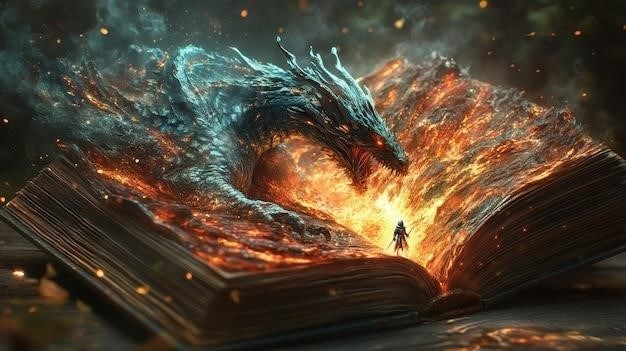the book thief book pdf
The Book Thief by Markus Zusak is a historical fiction novel set in Nazi Germany during World War II. It follows Liesel Meminger, a young girl who discovers the power of words and literature amidst the horrors of war. Narrated by Death, the story offers a unique perspective on humanity and resilience, making it a deeply emotional and thought-provoking read.

1.1 Overview of the Novel
The Book Thief by Markus Zusak is a historical fiction novel set in Nazi Germany during World War II. It follows the journey of Liesel Meminger, a young girl who discovers the power of words and literature amidst the horrors of war. Narrated by Death, the story explores themes of hope, humanity, and the resilience of the human spirit. The novel is a poignant and emotional tale that highlights the impact of war on ordinary lives and the enduring power of literature.
1.2 Author Markus Zusak
Markus Zusak is an Australian author known for his unique storytelling and emotional depth. Born in 1975 to German immigrant parents, Zusak grew up immersed in stories of World War II, which heavily influenced The Book Thief. His writing often explores themes of humanity, hope, and morality. Besides The Book Thief, Zusak has written other acclaimed novels like I Am the Messenger. His work has received international acclaim for its thought-provoking and deeply moving narratives.
1.3 Historical Context of the Book
The Book Thief is set in Nazi Germany during World War II, a time of immense turmoil and oppression. The novel captures the atmosphere of fear, propaganda, and persecution under Hitler’s regime. It highlights the Holocaust’s devastating impact, particularly on Jewish communities, and the moral dilemmas faced by ordinary Germans. The story’s setting in Molching, a fictional town near Munich, provides a vivid backdrop for exploring war’s effects on humanity and the resilience of hope amidst despair.

Plot Summary
The Book Thief follows Liesel Meminger, a young German girl, as she navigates life during WWII. Adopted by the Hubermanns, she discovers the power of words while facing war’s harsh realities. The story, narrated by Death, explores themes of hope, loss, and humanity through Liesel’s journey and relationships with Max, a Jewish fugitive, and her foster family, culminating in tragic yet life-affirming events.
2.1 Death as the Narrator
In The Book Thief, Death serves as the unique and personified narrator, offering a haunting yet poetic perspective on human life and mortality. Death’s voice is both detached and empathetic, guiding readers through Liesel’s story while reflecting on the inevitability of death. The narrator’s interactions with Liesel, particularly the three times Death encounters her, highlight her resilience and the profound impact of words in a world torn apart by war and hatred. This narrative choice humanizes Death, making it a thought-provoking and memorable element of the novel.
2.2 Liesel Meminger: The Book Thief
Liesel Meminger is the young protagonist of The Book Thief, a courageous and curious girl growing up in Nazi Germany. Orphaned and fostering with the Hubermanns, Liesel discovers solace in words and literature. Her title, “The Book Thief,” reflects her acts of stealing books to escape the harsh realities of war. Through her journey, Liesel’s love for language becomes a source of strength, hope, and defiance in a world consumed by hatred and destruction.
2.3 The Three Times Death Saw Liesel
Death, the narrator, encounters Liesel Meminger three times, each marking a pivotal moment in her life. Their first meeting occurs at her brother Werner’s funeral, where Liesel steals her first book. The second time is during a tragic event involving her mother, and the third is in the aftermath of a devastating bombing. These encounters highlight Liesel’s resilience and the profound impact of her connection to words and humanity, even in the face of death and war.
Key Characters
- Liesel Meminger: A young girl who discovers the power of words during WWII.
- Death: The unique narrator who observes Liesel’s journey with curiosity and empathy.
- Hans and Rosa Hubermann: Liesel’s foster parents, offering love and protection.
- Max Vandenburg: A Jewish fugitive who becomes Liesel’s close friend.
- Ilsa Hermann: The mayor’s wife, whose library becomes Liesel’s sanctuary.
3.1 Liesel Meminger
Liesel Meminger is the protagonist, a young girl living in Nazi Germany during WWII. She discovers her love for words and literature, which becomes her escape from the harsh realities of war. Adopted by Hans and Rosa Hubermann, Liesel learns to navigate her new life, forming strong bonds with those around her. Her friendship with Max Vandenburg, a Jewish fugitive, deepens her understanding of humanity. Liesel’s journey from illiteracy to becoming the “book thief” symbolizes hope, resilience, and the transformative power of words in the face of oppression.
3.2 Death: The Unique Narrator
Death serves as the unconventional narrator of The Book Thief, offering a distinct perspective on the events of WWII. His tone is empathetic, philosophical, and oddly humorous, as he collects souls while observing Liesel’s journey. Death’s narration provides a broader view of the war’s impact, making the story more poignant. His encounters with Liesel highlight themes of mortality and humanity, adding depth to the narrative. Death’s voice is both detached and compassionate, guiding readers through the emotional highs and lows of the story.
3.3 Hans and Rosa Hubermann
Hans and Rosa Hubermann are Liesel’s foster parents, offering her a loving home in Nazi Germany. Hans, a kind-hearted painter, teaches Liesel to read and provides emotional support. Rosa, though stern, has a deep affection for Liesel. Together, they create a safe environment, even hiding Max Vandenburg, a Jewish man, showcasing their courage and humanity during oppressive times. Their relationship with Liesel highlights the strength of family bonds amidst war and hardship.
3.4 Max Vandenburg
Max Vandenburg, a Jewish man fleeing Nazi persecution, seeks refuge with the Hubermanns. Despite his physical and emotional scars, Max forms a deep bond with Liesel, sharing stories and fostering hope. His presence adds complexity to the narrative, highlighting the human cost of war and the quiet acts of resistance against oppression. Max’s character symbolizes resilience and the enduring power of friendship in the face of adversity.
3.5 Ilsa Hermann
Ilsa Hermann, the mayor’s wife, plays a pivotal role in Liesel’s journey. Initially portrayed as distant, her true compassion emerges when she allows Liesel to visit her library, sharing the joy of books. Her subtle defiance of Nazi norms and quiet support for Liesel highlight the power of small acts of resistance. Ilsa’s library becomes a sanctuary for Liesel, symbolizing the enduring strength of literature and humanity amidst oppression.
Themes in “The Book Thief”
The novel explores profound themes like the power of words, war’s brutality, hope amidst despair, death’s inevitability, and moral dilemmas in Nazi Germany.
4.1 The Power of Words and Literature
In The Book Thief, words are portrayed as both weapons and tools for empowerment. Liesel’s journey with stolen books highlights literature’s ability to inspire, comfort, and challenge societal norms. The novel underscores how words can manipulate, as seen in Nazi propaganda, but also how they can unite and uplift. Liesel’s love for reading and writing becomes her escape and strength, showing the transformative power of language in the face of oppression and despair.
4.2 War and Its Impact on Humanity
The Book Thief vividly portrays the devastating effects of war on individuals and communities. The novel highlights the loss of innocence, fear, and resilience as characters like Liesel and her neighbors endure bombings, hunger, and separation. It also explores the moral dilemmas and sacrifices made during wartime, emphasizing the human cost of conflict. The story underscores how war fractures society, leaving deep emotional and physical scars that linger long after the fighting ends.
4.3 Hope and Resilience
The Book Thief illustrates hope and resilience through Liesel’s journey amidst WWII’s horrors. Despite losing her family and facing poverty, Liesel finds strength in words and relationships. Her bond with Hans, Rosa, and Rudy, along with her defiance in stealing books, symbolizes the enduring power of hope. Even in despair, small acts of kindness and courage highlight humanity’s capacity to persevere, offering a beacon of light in darkness.
4.4 The Concept of Death and Mortality
Death, personified as a narrator, offers a unique perspective on mortality in The Book Thief. With a gentle yet haunting tone, Death reflects on the inevitability of loss, particularly during wartime. The novel explores how death shapes human experience, emphasizing the value of life through its absence. Liesel’s encounters with Death underscore the fragility of existence, yet also reveal the dignity and beauty inherent in it, even amidst war’s devastation.
4.5 Morality and Ethics in Nazi Germany
The Book Thief delves into the moral complexities of Nazi Germany, highlighting the ethical dilemmas faced by ordinary citizens. Characters like Liesel, Hans, and Rosa Hubermann exemplify courage and kindness amidst oppression, while others conform to Nazi ideology. The novel portrays the struggle between fear and conscience, emphasizing the importance of standing against injustice. It underscores the moral responsibility of individuals in resisting authoritarian regimes, even in the face of overwhelming danger and societal pressure.

Literary Style and Structure
Death narrates with a unique, poetic voice, blending foreshadowing and emotional depth to explore themes and character development in a non-linear, engaging storytelling style.
5.1 Unique Narrative Voice
Death serves as the unconventional narrator, offering a poignant yet darkly humorous perspective on WWII. This unique voice humanizes Death, making it relatable and empathetic. Through Death’s lens, the story unfolds with vivid imagery and philosophical musings, creating an emotional connection with readers. The narrative voice is distinctive, blending personification and lyrical prose to explore themes of mortality and humanity. This storytelling approach sets The Book Thief apart, making it a compelling read.
5.2 Symbolism in the Novel
The Book Thief is rich in symbolism, with elements like fire, ash, and colors representing broader themes. Fire symbolizes destruction and the power of words, while ash embodies death and loss. Colors like red, black, and white are used to convey emotions and ideas, such as bloodshed, mourning, and purity. These symbols enhance the narrative, adding depth to the story’s exploration of life, death, and humanity during WWII. The novel’s symbolism resonates deeply, leaving a lasting impression on readers.

5.3 The Use of Foreshadowing
Foreshadowing is skillfully woven into The Book Thief, with Death’s narration hinting at future events. This technique builds tension and emotional preparation, such as Liesel’s three encounters with Death or Max’s uncertain fate. Zusak’s use of foreshadowing enhances the story’s suspense, making readers more invested in the characters’ journeys. It underscores the inevitability of certain events, deepening the narrative’s emotional impact and thematic resonance, while maintaining the story’s pacing and engagement. This literary device is crucial to the novel’s storytelling.
5.4 Emotional Depth and Character Development
The Book Thief excels in creating profound emotional connections through its characters. Liesel’s journey from a vulnerable girl to a resilient young woman highlights her growth and courage. The bonds she forms with Hans, Rosa, and Max are deeply human, evoking empathy and hope. Zusak’s portrayal of these relationships, set against the backdrop of war, underscores the strength of the human spirit and the enduring power of love and kindness in the face of adversity.
Reception and Reviews

The Book Thief received widespread critical acclaim for its powerful storytelling and emotional depth. It became a bestseller and won numerous prestigious awards, resonating deeply with readers.
6.1 Critical Acclaim
“The Book Thief” has garnered widespread critical acclaim for its profound storytelling and emotional depth. The novel, narrated by Death, offers a unique perspective on WWII, resonating deeply with readers. Critics praised Markus Zusak’s lyrical prose and the vivid portrayal of Liesel’s journey. The book won the Michael L. Printz Honor in 2006 and has been translated into over 30 languages. Its ability to balance tragedy with hope has made it a modern classic, widely celebrated for its literary excellence and historical significance.
6.2 Reader Feedback and Popularity

The Book Thief has received overwhelming reader feedback, with millions of copies sold worldwide. Readers praise its emotional depth and unique narrative voice. The book holds a 4.7-star rating on Goodreads and is often recommended. Its popularity spans across age groups, making it a favorite among both young and adult readers. The availability of the PDF format has further enhanced its accessibility, contributing to its widespread popularity and enduring appeal.
6.3 Comparisons with Other WWII Novels
The Book Thief is often compared to other WWII novels like The Diary of Anne Frank and Man’s Search for Meaning, as it explores themes of hope, humanity, and survival. However, its unique narrative voice and focus on literature as a form of resistance set it apart. The novel’s emotional depth and historical accuracy make it a standout in the genre, resonating with readers who appreciate its fresh perspective on a well-documented era.
Adaptations and Related Media
The Book Thief has been adapted into a 2013 film, audiobook versions, and stage plays, expanding its reach beyond the written word to diverse audiences worldwide effectively.
7.1 The Book Thief Movie (2013)
The film adaptation of The Book Thief, directed by Brian Percival, brings Markus Zusak’s novel to life. Starring Sophie Nélisse as Liesel, Geoffrey Rush as Hans, and Emily Watson as Rosa, the movie captures the emotional depth of the story. It follows Liesel’s journey, her love for words, and the impact of war on her community. The film stays true to the book’s essence, offering a poignant visual interpretation of the narrative, resonating with fans of the novel worldwide.
7.2 Audiobook Versions
The audiobook version of The Book Thief is a compelling way to experience the story, with narrator Allan Corduner bringing depth to Death’s unique voice. Available on platforms like Audible and Google Play Books, it offers a convenient way to enjoy the novel. The audiobook captures the emotional weight of Liesel’s journey, making it accessible to listeners on the go while maintaining the book’s poignant essence and resonance.
7.3 Stage Play Adaptations
The Book Thief has been adapted into a stage play, bringing the emotional story of Liesel and Death to life. The play captures the essence of the novel, focusing on themes of hope, loss, and the power of words. Adaptations have been performed globally, with creative staging to reflect the WWII setting. The play offers a unique way to experience the story, emphasizing its universal message and emotional depth through live performance.

Educational Significance
The Book Thief holds significant educational value, offering insights into WWII history, moral lessons, and literary analysis, making it a powerful tool for fostering empathy and understanding.
8.1 Use in School Curricula
The Book Thief is widely incorporated into school curricula for its historical depth and moral complexity. Teachers use it to explore WWII history, promoting discussions on humanity and ethics. The novel’s emotional storytelling and relatable characters engage students, fostering empathy and critical thinking. Its availability in PDF format makes it accessible for classroom use, encouraging deeper analysis of themes like hope, censorship, and resilience. This ensures its educational relevance across various age groups and learning environments.
8.2 Teaching Holocaust History
The Book Thief is a powerful tool for teaching Holocaust history, offering a poignant narrative of life under Nazi rule. The novel provides students with a personal perspective on the atrocities of WWII, highlighting themes like persecution, resistance, and the human spirit. Educators use the book to discuss the Holocaust’s impact on ordinary lives, fostering empathy and historical understanding. Its accessibility in PDF format ensures wide dissemination, making it a valuable resource for Holocaust education programs worldwide.
8.3 Literary Analysis and Discussion Topics
The PDF version of The Book Thief offers a convenient format for literary analysis. Key discussion topics include the novel’s themes of hope, death, and morality, as well as its unique narrative voice. Students can explore symbolism, character development, and the emotional depth of the story. The book’s historical context and its impact on modern readers are also essential areas for discussion, making it a rich text for analytical study and classroom engagement.

Accessing “The Book Thief” in PDF Format
The PDF version of The Book Thief is widely available through legal e-book platforms and online retailers, offering readers a convenient way to access and enjoy the novel.
9.1 Legal Sources for the Book
The PDF version of The Book Thief can be legally accessed through reputable e-book platforms like Amazon Kindle, Barnes & Noble Nook, Google Books, and Apple Books. These platforms offer secure and authorized downloads, ensuring support for the author and publisher. Readers can also preview excerpts before purchasing, making it a convenient option for those interested in the novel. Always opt for legal sources to promote literacy and respect intellectual property.
9.2 E-book Platforms and Availability
The Book Thief is widely available in e-book format across popular platforms like Amazon Kindle, Kobo, Scribd, and OverDrive. These services offer convenient access to the novel, allowing readers to download or rent the book. Many libraries also provide digital copies through OverDrive, making it accessible to members. The e-book is compatible with various devices, ensuring readers can enjoy it anywhere. Its global availability makes it easy for audiences worldwide to engage with the story.
9.3 Importance of Supporting Authors
Purchasing The Book Thief in PDF or other formats through legal channels ensures authors like Markus Zusak receive fair compensation for their work. This support fosters creativity and encourages writers to produce meaningful stories. Legal purchases also uphold the value of intellectual property and promote a sustainable publishing industry. By choosing legitimate sources, readers contribute to the literary community and honor the effort behind the creation of such impactful novels.
The Book Thief is a poignant tale of hope, loss, and resilience, offering timeless lessons through its vivid storytelling and emotional depth.
10.1 Final Thoughts on the Novel
The Book Thief masterfully weaves a story of hope and resilience amid war’s darkness. Through Death’s unique voice, Markus Zusak explores humanity’s strength and the power of words. Liesel’s journey, alongside vivid characters like Hans and Max, creates an emotional tapestry. The novel’s historical depth and moral questions leave readers reflecting on courage, love, and the enduring impact of literature. Its universal themes make it a timeless, unforgettable read.

10.2 Encouragement to Read the Book
Reading The Book Thief is an unforgettable experience, offering a profound exploration of humanity, hope, and the power of words. Markus Zusak’s unique narrative voice and vivid storytelling make it a must-read for anyone who appreciates historical fiction. The novel’s emotional depth and universal themes resonate deeply, making it a compelling choice for readers seeking a story that lingers long after the final page. It’s a testament to the enduring strength of the human spirit.
10.3 The Lasting Impact of “The Book Thief”
The Book Thief has left an indelible mark on literature and readers worldwide. Its poignant portrayal of WWII through Liesel’s eyes has made it a modern classic. The novel’s themes of hope, humanity, and the power of words resonate universally. It has inspired countless readers, fostering empathy and understanding of historical atrocities. The book’s enduring popularity and inclusion in school curriculums ensure its message continues to educate and move future generations, solidifying its lasting legacy.





















